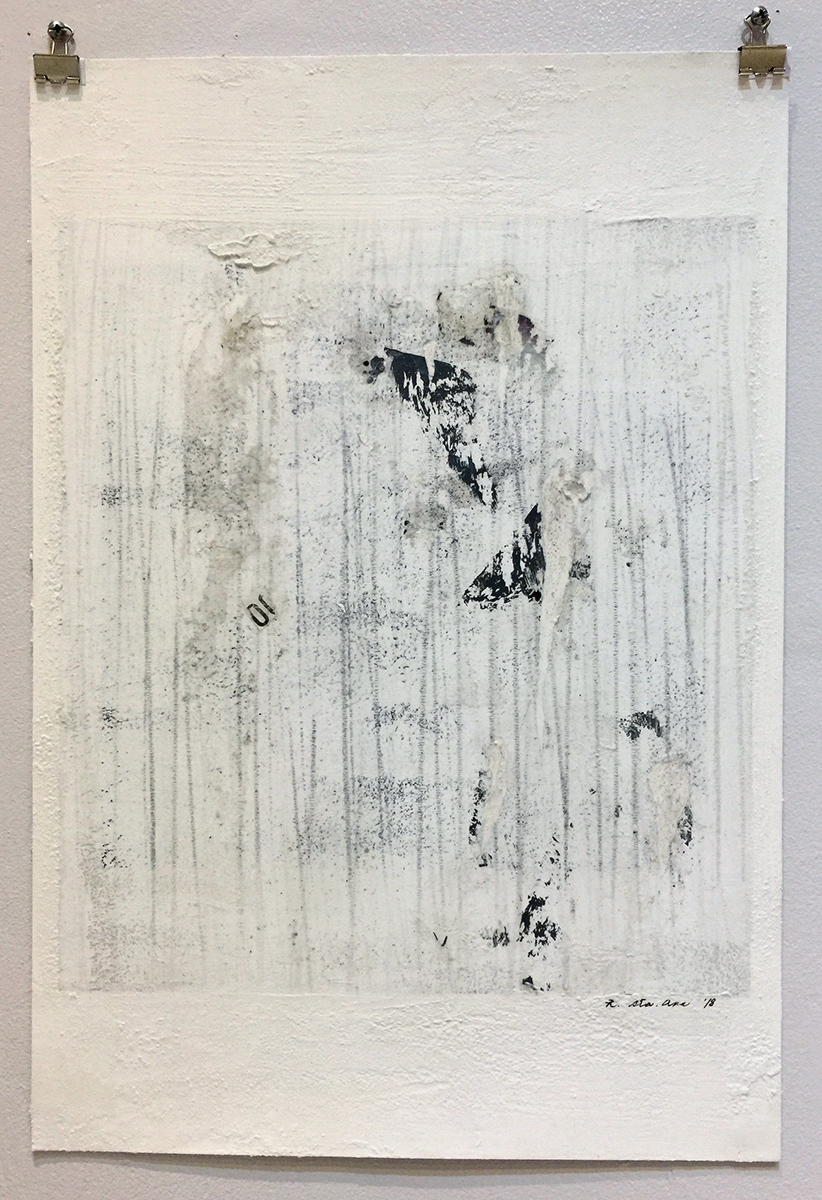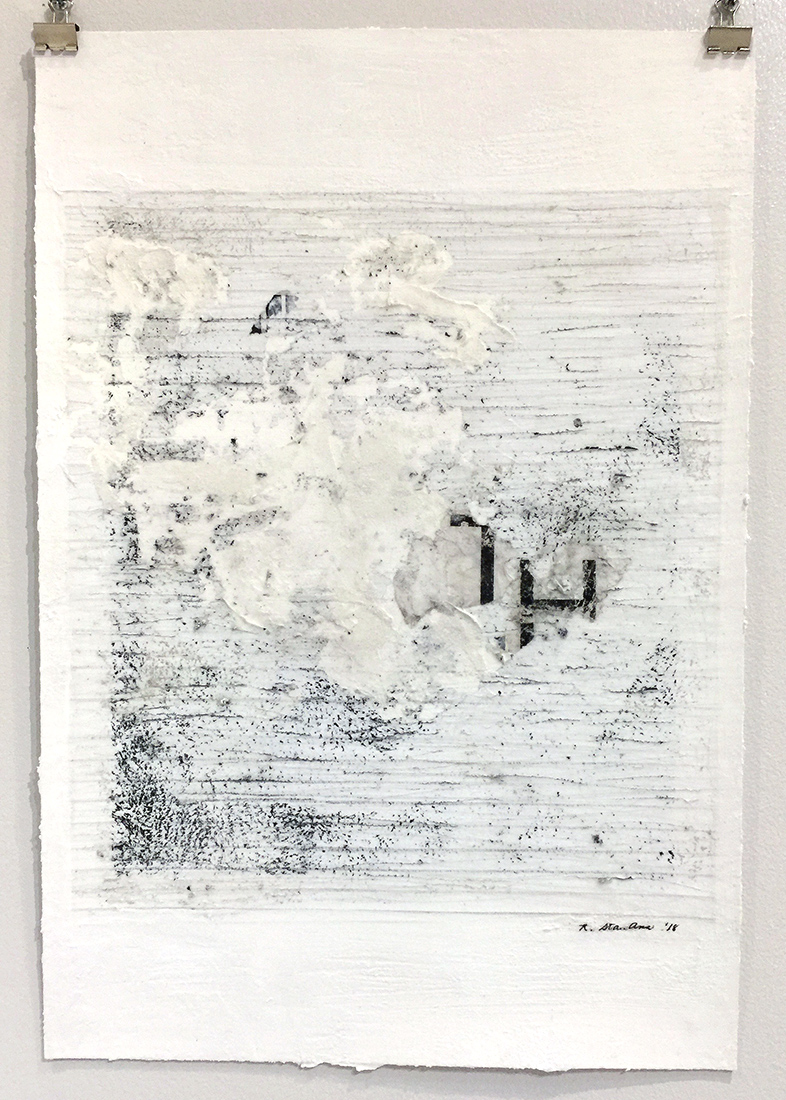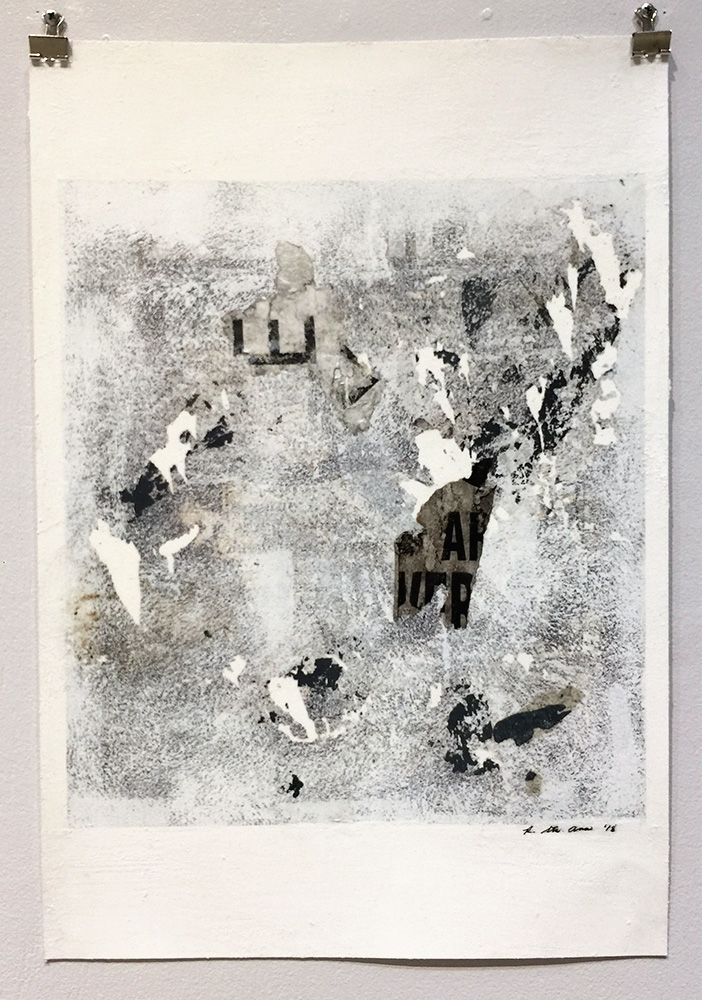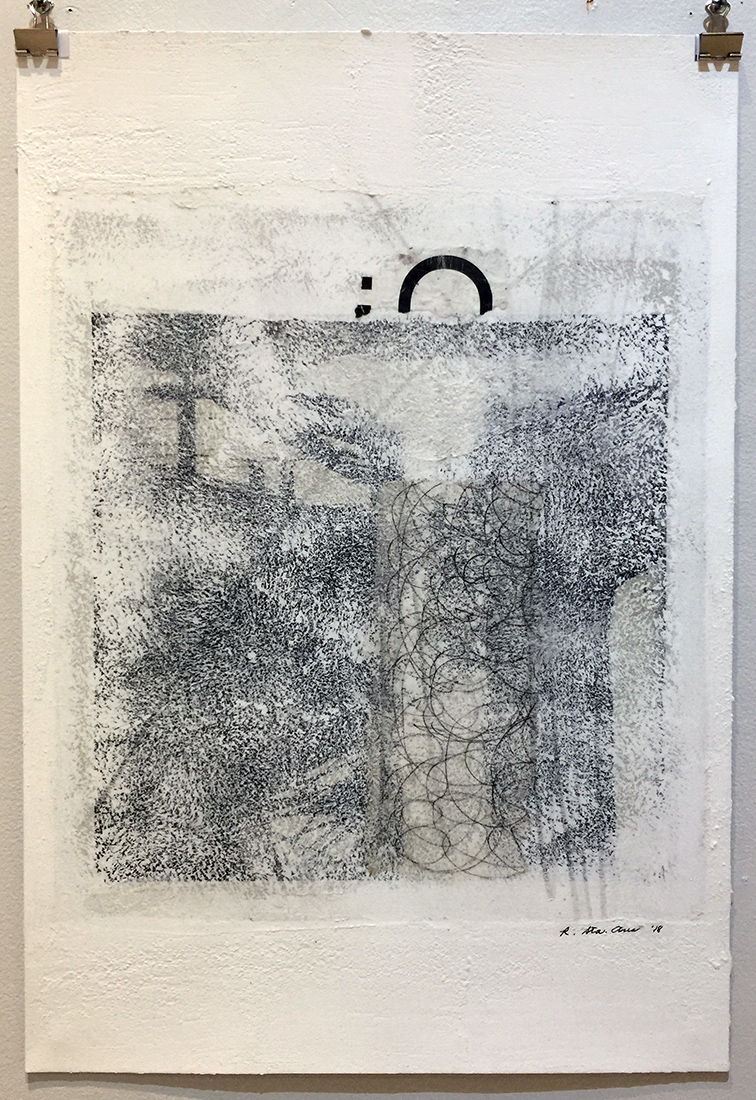Jun-Jun Sta. Ana
January — March 2018

| Jun-Jun Sta. Ana (b.1963) is a multi-disciplinary artist based in Manila, Philippines. His artistic practice is heavily process-based and involves utilizing found images and materials while also having a fondness for replication. Sta. Ana’s recent one-person shows were “Langit”, held at the Pinto Art Museum last 2019, “Sweet Decay” at Kapitana Gallery in Silay City back in 2018, and “Monologue” at The Drawing Room Gallery in the year 2017. In 2019, Sta. Ana has exhibited in group exhibitions, namely; “Double, Double, Moore in Trouble” with Tin-aw Art Management, “Hands-On” – the annual exhibition of the Association of PinoyPrintmakers at Pinto Art Museum, and “Analog” – a furniture collaboration between New Folk and the Association of Pinoy Printmakers at Pinto Art Museum. Besides exhibiting his works in the Philippines, he has also shown internationally. In 2018, he was a participant in the “Jogjakarta International Print Exhibition” in Jogjakarta, Indonesia. He also exhibited in an exhibition entitled “AND” at The University of Tennesee, Knoxville, The University of Wisconsin, Madision, and The University of Iowa, USA. |
I was interested in presenting an abstract pulse of Negros island by using found texts on the streets of Talisay and Bacolod cities; which ran the gamut of notices, ads, etc, on paper and tarpaulin.


Sweet Decay
02.03.2018
Kapitana Gallery
When we consider the urban fabric, we always think of the built environment: the man-made structures that give the city its face. But while the urban is indeed architectural, it is also textual. Just think of the billboards, the graffiti, the signage on jeepneys, the headlines of newspaper, the itinerant words on a brochure blown by the wind: all the letters of the language that we read intentionally or subliminally, whether we are in the lookout for information or simply prompted by the effortlessness of reading: the literature of the streets. Without this textual dimension, the city will be largely indecipherable, mute. It will be a place with no context, no identity beyond the visual.
In Sweet Decay, it is the linguistic aspect of Talisay City and Bacolod City that is pre-supposed. What is usually perceived in the background is now foregrounded in largely monochromatic works that reveal how words activate or even constitute a space. Rather than simply transcribing them to the medium, what Sta. Ana does is to directly lift the words from the streets in the form of tarps and newspaper shards so what you have is the actual present on paper or canvas-a direct transfer and transmission of the urban. Accomplished through collage and decollage, through decoupage and its equivalent undoing, these works are the crumbling fragments of the city, evidence of civilization. With random letters floating here and there, garbled by the "noise" of the artist's gestural interventions, language is pushed to intelligibility, to the almost pictorial.

This is the "decay" alluded to the title, which is indicative of the almost invisible ruin that assails a city stricken with modernity. As an installation, the exhibition is a display of the visual field notes of the artist as he roamed the city trying to capture its essence. For the artist, this essence is constituted by the failure of communication, the breakdown of language, as well as its persistence even through radical acts of defacement. Once present in the public sphere, the words the viewer sees carry the afterlife of the city as the register of the artist's personal discoveries. Sweet Decay is the trailing echo of the urban given voice by Sta. Ana's textual-and textural-deconstructions.
- Carlomar Daoana








L-R
03 Negros 3, mixed media, 2018 07 Negros 11, mixed media, 2018 00 Rizal St.1, mixed media, 2018




Photos courtesy of the artist.